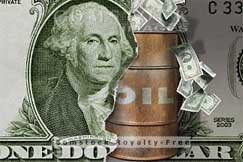America's corn farmers aren't getting rich from the production of E85
You might be surprised to know that,
but America grows over 11 billion bushels of corn annually, and
more than 50% becomes animal food; mostly for cattle and pigs.
The US ethanol industry's growing appetite for corn has reduced
the amount of exported corn somewhat, but there's still plenty
left over after we've exhausted domestic requirements. A majority
of the exported yellow foodstuff goes towards making corn syrup,
oil, plastics and heating. What's left over from that is subject
to being exported. Despite what is now, an over-abundance of American
corn, the US federal government continues to subsidize the price.
American corn farmers receive the difference between the crop's
fair market value and $2.50 a bushel. This price support ensures
that corn farming remains profitable, and prevents the US from
having to buy corn from other countries. So, why doesn't the federal
subsidy create profits for farmers and low input costs for ethanol
producers?
Transportation and Storage of Ethanol
Besides being a seasonal crop, transporting corn is costly, also contributes to the difficulty farmers have in selling directly to distant buyers. Meanwhile, most corn farmers lack sufficient storage capacity needed to stockpile any surplus, thereby creating an entire industry devoted to buying, storing, and then reselling grain from US farmers, to other buyers.
This 'service' comes at a cost, grain middlemen generally pay less than $2 per bushel, which they can then resell for $2.50 to $3 per bushel on a futures contract. Ethanol
refineries are even willing to pay a little more, since they know they'll sell every drop of fuel they produce. The downside that ethanol producers and consumers alike face, is that they are stuck with a raw material cost that will likely never drop below $2.50 a bushel as long as the federal subsidy is in place.

|
This 'price fixing' like action remains constant, regardless of much corn is grown, stored or shipped.
A gallon of ethanol requires roughly $.75 of corn, that's about 1/3 bushel per gallon. That may seem like a great cost base for an alternative fuel, especially when compared to crude oil at $1.40 per gallon, but E85's ancillary costs drive that price up. There are 3 major factors which contribute to the higher cost in producing Ethanol. First, ethanol production is more expensive than gasoline simply because it requires more energy to make fuel from corn than petroleum. Second, thanks to the elimination of the octane enhancing gasoline additive MBTE, demand for ethanol far exceeds the supply. Third, ethanol cannot be stored for long, and transportation costs are astronomical.
Unlike petroleum-based gasoline, ethanol is a corrosive product and cannot move through existing pipelines. That means E85 has to be transported by specially equipped trucks or trains. America's trains are busy hauling billions of tons of coal from mines to power plants, and are known to be delayed for extended periods during transport. The railroads are adding locomotives as fast as manufacturers can build them but they're all dedicated to moving a material that provides a larger, steadier business with less hazards than flammable ethanol. Due to this, E85 distribution is primarily done by truck and trailer. What we are left with is a renewable, alternative fuel with a production cost that is dependent on a crop with a cost that seems to be more or less fixed at a permanent level. E85 is considered by many to be an eco-sexy, all-American source of fuel, but its current production costs make it an economically dubious alternative to "cheap" gas. This presumption becomes more valid provided you subtract the cost for petrochemical products used as fertilizer, insecticides, and power the vehicles that harvest, process and transport the corn at the farm. All this before considering the fact that E85 yields about 25% less horsepower than gasoline. Only since gasoline has risen to 3$ a gallon, does E85 begin to offer a cost-effective alternative to fossil fuels.
Yellow Politics
The fundamental economics of the E85 market ensures that the fuel
is, and will remain, a product whose future depends more on politics
than the "free market." Not to say that is inherently wrong, it
just seems that if we're serious about energy independence, the
US government could step in, and make E85 more viable. Things that
come to mind are building a national network of E85-compatible
pipelines, removing or reducing the taxes on E85, or even ending
corn subsidies. Meanwhile, the people who'll
benefit most from E85 are the people who transport the raw materials
to the ethanol plants and the finished product to the consumer.
The political momentum behind the fuel is enormous, including huge
CAFE (Corporate Average Fuel Economy) credits for manufacturers
that build vehicles that will never see a drop of corn juice. In
fact, the production and distribution of E85 involves a strange
mix of politics and economics which could well lead to a dead end.
Following the money may make your head spin, but it's high time
to separate E85 facts from the politically correct fug of obfuscation.
Corn, P1
|







